Dingsu Wang
Reconstructing Graph Diffusion History from a Single Snapshot
Jun 04, 2023Abstract:Diffusion on graphs is ubiquitous with numerous high-impact applications. In these applications, complete diffusion histories play an essential role in terms of identifying dynamical patterns, reflecting on precaution actions, and forecasting intervention effects. Despite their importance, complete diffusion histories are rarely available and are highly challenging to reconstruct due to ill-posedness, explosive search space, and scarcity of training data. To date, few methods exist for diffusion history reconstruction. They are exclusively based on the maximum likelihood estimation (MLE) formulation and require to know true diffusion parameters. In this paper, we study an even harder problem, namely reconstructing Diffusion history from A single SnapsHot} (DASH), where we seek to reconstruct the history from only the final snapshot without knowing true diffusion parameters. We start with theoretical analyses that reveal a fundamental limitation of the MLE formulation. We prove: (a) estimation error of diffusion parameters is unavoidable due to NP-hardness of diffusion parameter estimation, and (b) the MLE formulation is sensitive to estimation error of diffusion parameters. To overcome the inherent limitation of the MLE formulation, we propose a novel barycenter formulation: finding the barycenter of the posterior distribution of histories, which is provably stable against the estimation error of diffusion parameters. We further develop an effective solver named DIffusion hiTting Times with Optimal proposal (DITTO) by reducing the problem to estimating posterior expected hitting times via the Metropolis--Hastings Markov chain Monte Carlo method (M--H MCMC) and employing an unsupervised graph neural network to learn an optimal proposal to accelerate the convergence of M--H MCMC. We conduct extensive experiments to demonstrate the efficacy of the proposed method.
Networked Time Series Imputation via Position-aware Graph Enhanced Variational Autoencoders
May 29, 2023Abstract:Multivariate time series (MTS) imputation is a widely studied problem in recent years. Existing methods can be divided into two main groups, including (1) deep recurrent or generative models that primarily focus on time series features, and (2) graph neural networks (GNNs) based models that utilize the topological information from the inherent graph structure of MTS as relational inductive bias for imputation. Nevertheless, these methods either neglect topological information or assume the graph structure is fixed and accurately known. Thus, they fail to fully utilize the graph dynamics for precise imputation in more challenging MTS data such as networked time series (NTS), where the underlying graph is constantly changing and might have missing edges. In this paper, we propose a novel approach to overcome these limitations. First, we define the problem of imputation over NTS which contains missing values in both node time series features and graph structures. Then, we design a new model named PoGeVon which leverages variational autoencoder (VAE) to predict missing values over both node time series features and graph structures. In particular, we propose a new node position embedding based on random walk with restart (RWR) in the encoder with provable higher expressive power compared with message-passing based graph neural networks (GNNs). We further design a decoder with 3-stage predictions from the perspective of multi-task learning to impute missing values in both time series and graph structures reciprocally. Experiment results demonstrate the effectiveness of our model over baselines.
MAD-VAE: Manifold Awareness Defense Variational Autoencoder
Oct 31, 2020
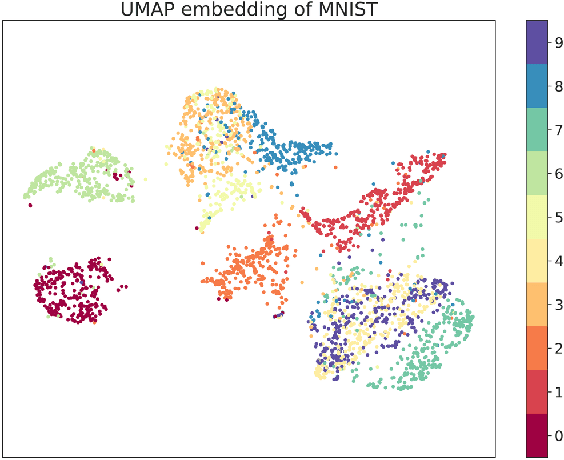


Abstract:Although deep generative models such as Defense-GAN and Defense-VAE have made significant progress in terms of adversarial defenses of image classification neural networks, several methods have been found to circumvent these defenses. Based on Defense-VAE, in our research we introduce several methods to improve the robustness of defense models. The methods introduced in this paper are straight forward yet show promise over the vanilla Defense-VAE. With extensive experiments on MNIST data set, we have demonstrated the effectiveness of our algorithms against different attacks. Our experiments also include attacks on the latent space of the defensive model. We also discuss the applicability of existing adversarial latent space attacks as they may have a significant flaw.
Learning Interpretable Representation for Controllable Polyphonic Music Generation
Aug 17, 2020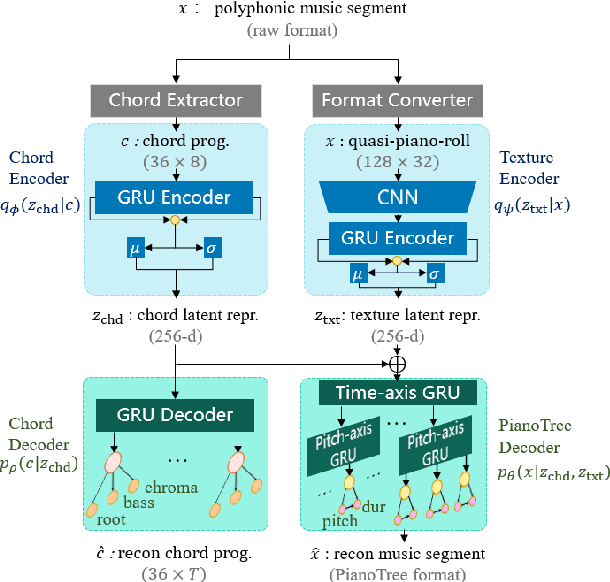
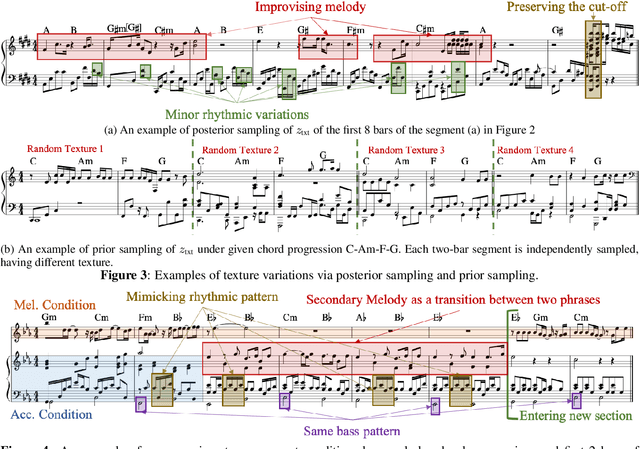
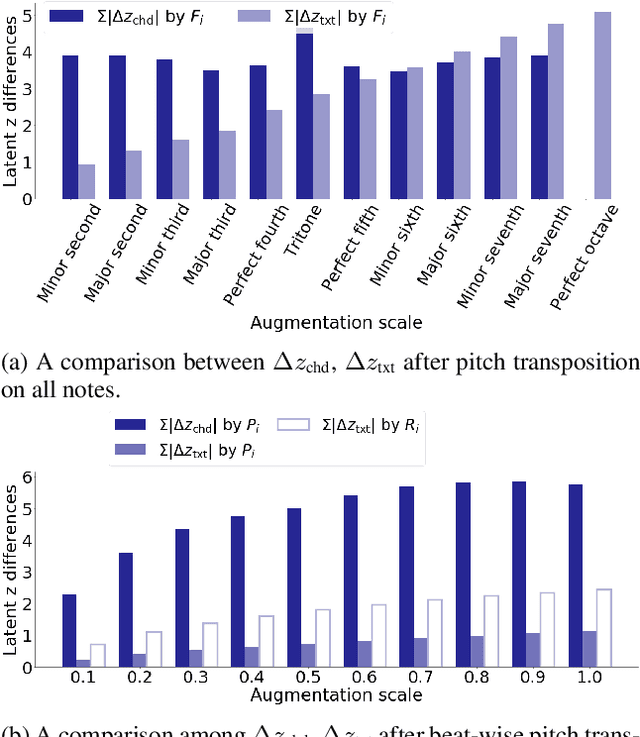
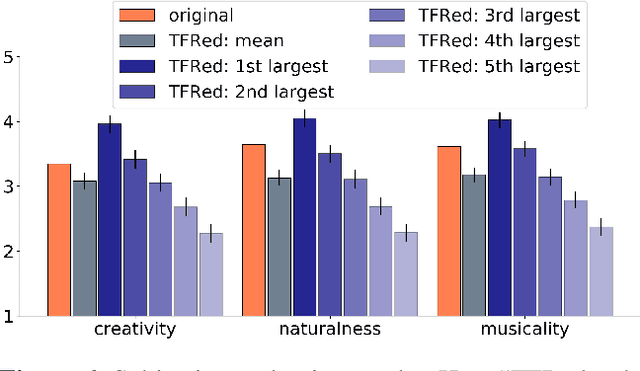
Abstract:While deep generative models have become the leading methods for algorithmic composition, it remains a challenging problem to control the generation process because the latent variables of most deep-learning models lack good interpretability. Inspired by the content-style disentanglement idea, we design a novel architecture, under the VAE framework, that effectively learns two interpretable latent factors of polyphonic music: chord and texture. The current model focuses on learning 8-beat long piano composition segments. We show that such chord-texture disentanglement provides a controllable generation pathway leading to a wide spectrum of applications, including compositional style transfer, texture variation, and accompaniment arrangement. Both objective and subjective evaluations show that our method achieves a successful disentanglement and high quality controlled music generation.
Deep Music Analogy Via Latent Representation Disentanglement
Jul 08, 2019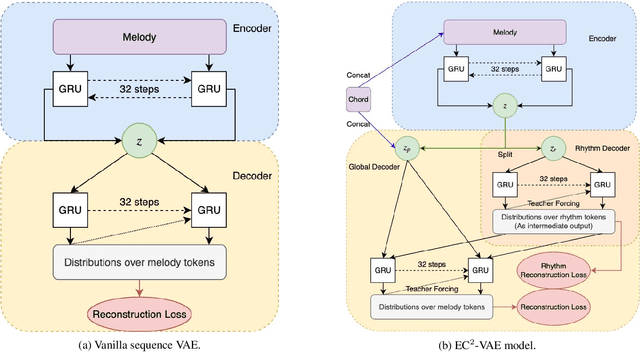

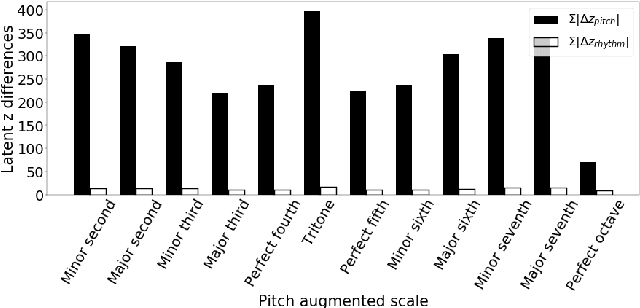

Abstract:Analogy-making is a key method for computer algorithms to generate both natural and creative music pieces. In general, an analogy is made by partially transferring the music abstractions, i.e., high-level representations and their relationships, from one piece to another; however, this procedure requires disentangling music representations, which usually takes little effort for musicians but is non-trivial for computers. Three sub-problems arise: extracting latent representations from the observation, disentangling the representations so that each part has a unique semantic interpretation, and mapping the latent representations back to actual music. In this paper, we contribute an explicitly-constrained variational autoencoder (EC$^2$-VAE) as a unified solution to all three sub-problems. We focus on disentangling the pitch and rhythm representations of 8-beat music clips conditioned on chords. In producing music analogies, this model helps us to realize the imaginary situation of "what if" a piece is composed using a different pitch contour, rhythm pattern, or chord progression by borrowing the representations from other pieces. Finally, we validate the proposed disentanglement method using objective measurements and evaluate the analogy examples by a subjective study.
 Add to Chrome
Add to Chrome Add to Firefox
Add to Firefox Add to Edge
Add to Edge